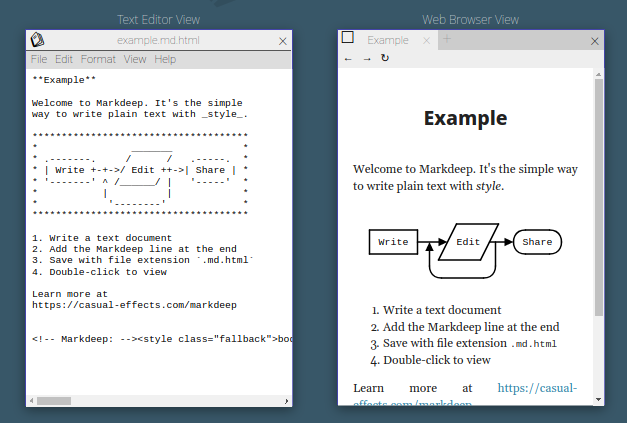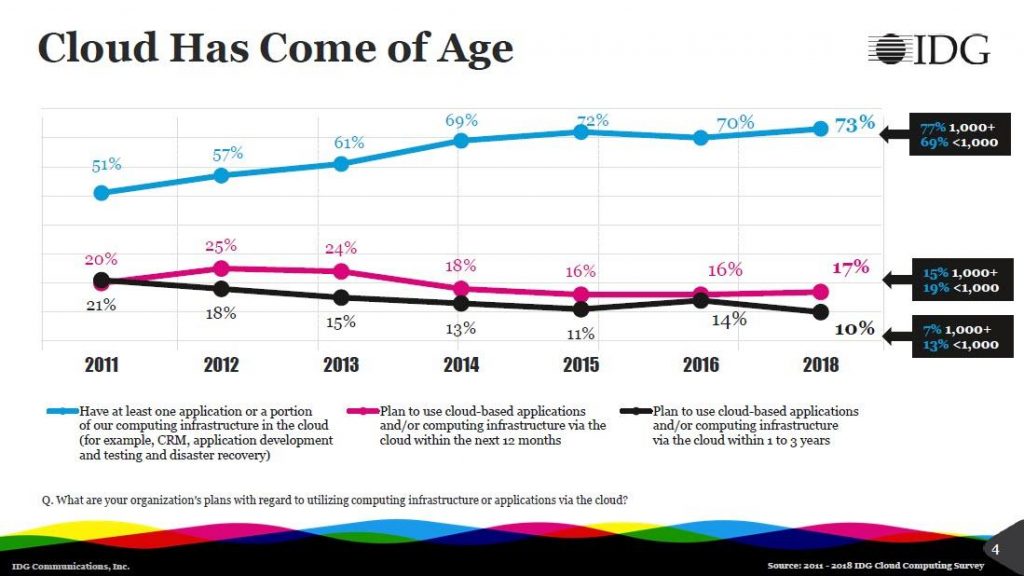Location: Limassol
Month: March 2019
Markdeep – Markdown on steroids

Markdown is of the best formats for writing documentation. It’s intuitive, cross-platform, and can be read or written without any special tools. But it does have a variety of limitations too (no includes, no special formatting for advanced things like charts or formulas, etc).
Markdeep is one of the tools that tries to extend Markdown and solve some of its limitations.
Markdeep is a technology for writing plain text documents that will look good in any web browser, whether local or remote. It supports diagrams, calendars, equations, and other features as extensions of Markdown syntax.
GitGuardian API Security Best Practices
The team behind GitGuardian, a tool that helps developers to keep credentials and other secrets outside of the source code, shares their documentation for the API security best practices.
The cool bit about their documentation is that it covers both how to avoid the issues and how to solve them if they happened.
Cloud Irregular: IAM Is The Real Cloud Lock-In
Vendor lock-in is an old and well discussed issue. Some people don’t care about it all, jump right in. Others avoid it like a plague. And then there are those who allow it, with some very careful considerations.
I have always been on the side of avoiding vendor lock-in by all costs. But lately, with all the SaaS offerings and cloud providers, I feel like the line becomes a lot more blurred.
Initially, when I started using Amazon AWS, I approached it exclusively as an IaaS, setting up my own servers in such a way that I would be able to move to another vendor in a heartbeat. These days, I’ve grown to trust Amazon a lot more. But I still feel uneasy about some of the lock-in.
“Cloud Irregular: IAM Is The Real Cloud Lock-In” is an interesting take on the cloud lock-in. It found the comparison of the Amazon IAM (Identity and Access Management) to the Microsoft Active Directory particularly insightful.
To illustrate this point, we have to look no farther than the nine-hundred-pound gorilla of the IAM jungle, which continues to be Microsoft’s ActiveDirectory. I’m not sure I even know what ActiveDirectory is anymore, to be honest. Is it a cloud service? A “hybrid identity” provider? A flippin’ Linux domain controller? The answer to all of those questions appears to be “yes, if that is what you want”, which is why AD implementations will surely keep an army of Microsoft “IT Pros” busy for a couple more decades.
Here’s what ActiveDirectory is not: easy to migrate off of.
On the future of Docker, containers, and serverless
I came across this blog post – “Goodbye Docker and Thanks for all the Fish” – which talks about the not-so-eminent, but very predictable death of Docker as both the technology, and the company. The gist of it is that container orchestration kicked in, and made Docker very replaceable with alternative container solutions. So much so, that in the upcoming release of the Red Hat Enterprise Linux 8 Docker has been replaced by Podman and a few other tools.
While I don’t know enough to have a strong opinion on the subject, the logic expressed in the blog post kind of makes sense to me.
All that reminded me of the recent interview with Simon Wardley, with the title providing the oversimplified summary:
Containers won the battle, but will lose the war to serverless.
Serverless concepts have been getting a lot of hype recently as well. And while I like where it’s going, I don’t think serverless will become a reality any time soon. Sure, it’s very applicable to smaller and simpler applications and well-engineered environments. But I think it’s more of a dream for the medium and large enterprise sector.
The thing is that the world moves at a much slower pace than we, in technology, would like to think. This Forbes article quotes some numbers from the study by IDG that shows that even the cloud adoption in the enterprise is far from complete yet.

The benefits of the cloud computing are obvious, but it takes time, and often a lot of it, to adopt the new technology and rip those benefits.
Once the cloud dust settles a bit, containers are the next on the list. I don’t have any hard numbers for container adoption in the enterprise, but my gut feeling is telling me that they are way below the cloud numbers (have a look at this study to get the feeling).
Serverless, in my mind, is the step after the containers. So even if that’s the future, it will take a long long time to get there.
Or maybe it won’t. Sometimes, the world gets so far behind the technology curve, that it jumps ahead by skipping steps. An example of that would be telephony in China, which went from almost nothing directly to mobile telephony, practically skipping the landlines.
